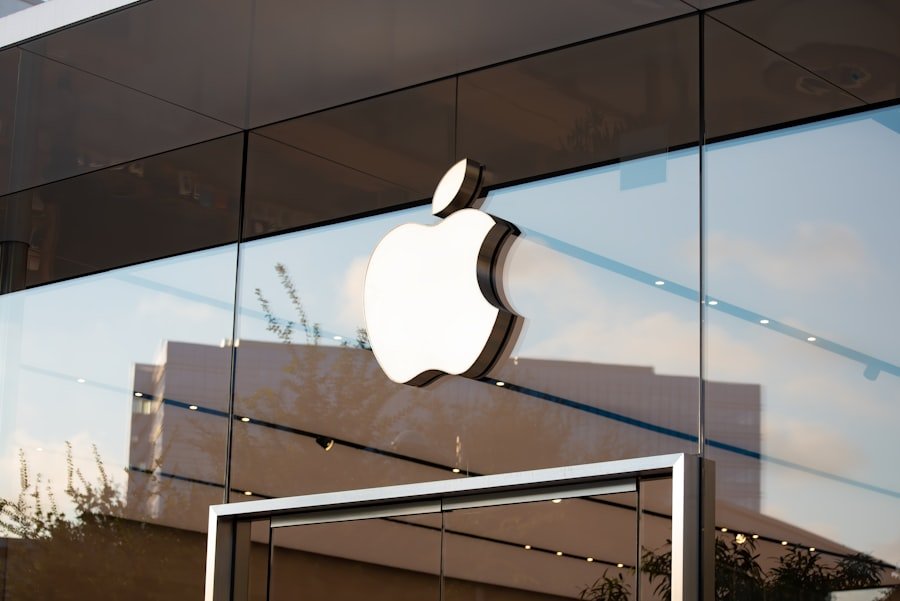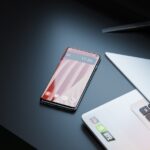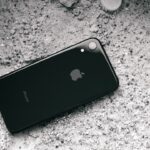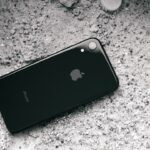The concept of the unplugged phone, often referred to as a landline or traditional telephone, has its roots in the late 19th century. The invention of the telephone is attributed to Alexander Graham Bell, who was awarded the first US patent for the device in 1876. This groundbreaking invention transformed communication, allowing people to converse over long distances without the need for physical presence.
Early telephones were rudimentary, consisting of a transmitter and receiver connected by wires, and they required a switchboard operator to connect calls. This system was labor-intensive and limited in scope, but it laid the groundwork for future innovations in telecommunications. As technology advanced, the unplugged phone evolved significantly.
The introduction of rotary dial telephones in the early 20th century marked a pivotal moment in user interaction. Instead of relying on operators, users could now dial numbers directly, which increased efficiency and accessibility. The mid-20th century saw further innovations, such as touch-tone dialing and the introduction of cordless phones in the 1980s.
These developments not only enhanced user convenience but also reflected broader societal changes, as families began to embrace more mobile lifestyles. Despite these advancements, the unplugged phone remained tethered to physical infrastructure, symbolizing a time when communication was more localized and personal.
Key Takeaways
- The unplugged phone has a rich history dating back to the invention of the telephone by Alexander Graham Bell in 1876.
- The iPhone has evolved significantly since its launch in 2007, with each new model introducing innovative features and design changes.
- The design of the iPhone has had a significant influence on other products, inspiring sleek and minimalist aesthetics in various industries.
- The iPhone has raised consumer expectations for technology, leading to a demand for seamless integration, intuitive interfaces, and high-quality materials.
- The iPhone has had a profound cultural impact, shaping the way we communicate, consume media, and interact with the world around us.
The evolution of the iPhone
The Original iPhone
Apple Inc., under the leadership of Steve Jobs, introduced a device that combined a phone, an iPod, and an internet communicator into one sleek package. The original iPhone featured a 3.5-inch touchscreen display, a minimalist design, and an intuitive user interface that relied heavily on touch gestures rather than physical buttons.
A New Era in Personal Computing
This radical departure from existing smartphones set a new standard for mobile devices and marked the beginning of a new era in personal computing. Subsequent iterations of the iPhone have seen remarkable advancements in technology and design. The introduction of the App Store in 2008 revolutionized how users interacted with their devices, allowing third-party developers to create applications that expanded the iPhone’s functionality beyond its original capabilities.
Evolution and Adaptation
Each new model brought enhancements such as improved cameras, faster processors, and larger displays. The iPhone 4 introduced Retina display technology, which significantly improved screen resolution, while the iPhone 6 and 6 Plus marked Apple’s entry into larger screen sizes, catering to consumer demand for more immersive experiences. As the iPhone evolved, it not only incorporated cutting-edge technology but also adapted to changing consumer preferences and lifestyles.
The design influence of the iPhone on other products

The design philosophy behind the iPhone has had a profound impact on a wide array of products beyond smartphones. Apple’s commitment to simplicity and elegance has inspired countless manufacturers across various industries to adopt similar design principles. The clean lines, minimalist aesthetics, and user-friendly interfaces that characterize the iPhone have become benchmarks for product design in general.
For instance, many tech companies have shifted towards flat design elements and intuitive navigation systems in their devices, mirroring Apple’s approach. Moreover, the influence of the iPhone extends into non-tech sectors as well. In consumer electronics, products such as smartwatches and tablets have adopted design cues from the iPhone, emphasizing sleekness and functionality.
Even household appliances have begun to reflect this trend; smart refrigerators and washing machines now feature touchscreens and app connectivity reminiscent of the iPhone’s interface. This cross-pollination of design ideas illustrates how the iPhone has not only shaped mobile technology but has also redefined consumer expectations across various product categories.
The impact of the iPhone on consumer expectations
| Metrics | Data |
|---|---|
| Increased demand for smartphones | Significant rise in smartphone sales after iPhone launch |
| Shift in user interface expectations | Consumers expect intuitive touchscreens and user-friendly interfaces |
| Impact on mobile app market | Explosion of app development and app usage |
| Higher expectations for mobile camera quality | Consumers demand high-quality cameras in smartphones |
| Changes in mobile internet usage | Increased reliance on mobile internet for various tasks |
The introduction of the iPhone fundamentally shifted consumer expectations regarding mobile devices. Prior to its release, smartphones were often viewed as complex tools primarily for business professionals. However, Apple’s marketing strategy positioned the iPhone as an essential lifestyle accessory for everyone, regardless of age or profession.
This democratization of technology led consumers to expect more from their devices—functionality combined with style became paramount. As a result, consumers began to prioritize features such as camera quality, app availability, and user experience over traditional metrics like battery life or call quality. The iPhone’s seamless integration with services like iCloud and Apple Music set a precedent for ecosystem connectivity that users now expect from all tech products.
This shift has compelled manufacturers to innovate continuously; they must not only keep pace with technological advancements but also anticipate changing consumer desires for personalization and convenience. The pressure to meet these heightened expectations has led to rapid advancements in smartphone technology across the industry.
The cultural significance of the iPhone
The cultural significance of the iPhone extends far beyond its technical specifications or sales figures; it has become a symbol of modern life itself. The device has influenced social interactions, communication styles, and even cultural norms. With its ability to connect people instantly through calls, texts, and social media platforms, the iPhone has transformed how relationships are formed and maintained.
It has facilitated a culture of immediacy where information is readily available at our fingertips, shaping our expectations for communication speed and accessibility. Moreover, the iPhone has played a pivotal role in shaping contemporary identity and self-expression. Social media applications like Instagram and Snapchat have thrived on the platform’s capabilities, allowing users to curate their lives visually and share experiences with a global audience.
This phenomenon has given rise to new forms of social validation based on likes and shares, fundamentally altering how individuals perceive themselves in relation to others. The iPhone has thus become not just a tool for communication but also an instrument for self-presentation and cultural participation.
The rise of smartphone technology

The rise of smartphone technology can be traced back to several key developments that converged around the time of the iPhone’s launch. While smartphones existed prior to 2007—most notably devices running on BlackBerry or Windows Mobile operating systems—their functionality was often limited compared to what consumers would come to expect from modern smartphones. The introduction of capacitive touchscreens and powerful processors allowed for more complex applications and smoother user experiences.
As smartphones gained popularity following the iPhone’s success, manufacturers began investing heavily in research and development to create devices that could compete in this burgeoning market. Android emerged as a formidable competitor, offering an open-source platform that allowed various manufacturers to produce their own smartphones with diverse features and price points. This competition spurred rapid innovation; features such as high-resolution cameras, biometric security measures like fingerprint scanners, and advanced artificial intelligence capabilities became standard across many devices within just a few years.
The nostalgia of the unplugged phone
In an age dominated by smartphones and constant connectivity, there exists a palpable nostalgia for the unplugged phone—a simpler time when communication was less frenetic and more personal. Many people fondly remember rotary phones or even early cordless models that required no charging or constant updates. These devices represented a tangible connection to loved ones; picking up a receiver felt more deliberate than tapping on a screen.
This nostalgia is often reflected in contemporary culture through retro designs or vintage-inspired products that evoke memories of simpler times. Some consumers actively seek out landline phones for their homes as a way to disconnect from digital distractions or as a statement against modern technology’s pervasive influence on daily life. This longing for the unplugged phone serves as a reminder of how far communication technology has come while also highlighting a desire for authenticity in an increasingly digital world.
The enduring appeal of the iPhone design
The enduring appeal of the iPhone’s design can be attributed to several factors that resonate deeply with consumers. First and foremost is its aesthetic simplicity; Apple’s design ethos emphasizes clean lines and minimalism that appeal to a wide audience. The use of high-quality materials such as aluminum and glass not only enhances durability but also conveys a sense of luxury that many consumers find attractive.
Additionally, Apple’s attention to detail in user experience contributes significantly to the iPhone’s lasting popularity. Features like haptic feedback provide tactile responses that enhance interaction with the device, while intuitive navigation ensures that even those unfamiliar with technology can use it effectively. This combination of form and function creates an emotional connection between users and their devices—one that fosters brand loyalty and encourages repeat purchases with each new iteration.
In conclusion, while technology continues to evolve at an unprecedented pace, both the unplugged phone’s historical significance and the iPhone’s modern innovations remind us of our ongoing relationship with communication devices. From their design influences to their cultural impacts, these devices shape not only how we connect with one another but also how we perceive ourselves within an ever-changing technological landscape.
Have you ever wondered why the unplugged phone looks like an iPhone? According to a recent article on getiphoneinfo.com, the design of the iPhone has become so iconic and influential that other phone manufacturers often try to emulate its sleek and modern look. This article explores the impact of the iPhone on the design of other smartphones and why the unplugged phone may resemble an iPhone. For more information, you can visit their contact page.
FAQs
What is the unplugged phone that looks like an iPhone?
The unplugged phone that looks like an iPhone is a non-functional replica of an iPhone, designed to resemble the appearance of an actual iPhone.
Why does the unplugged phone look like an iPhone?
The unplugged phone is designed to look like an iPhone in order to mimic the appearance of the popular and iconic smartphone. This design choice may be intended to appeal to consumers who are fans of the iPhone’s aesthetic.
Is the unplugged phone a real iPhone?
No, the unplugged phone is not a real iPhone. It is a non-functional replica and does not have the capabilities or features of a genuine iPhone.
What are the features of the unplugged phone that looks like an iPhone?
The features of the unplugged phone may include a similar physical design, such as the shape, size, and color of an iPhone. However, it does not have the functionality of a real iPhone, as it is not a working smartphone.
Where can I find the unplugged phone that looks like an iPhone?
The unplugged phone that looks like an iPhone may be available for purchase from various retailers, both online and in physical stores. It is often marketed as a novelty item or a decorative accessory.










